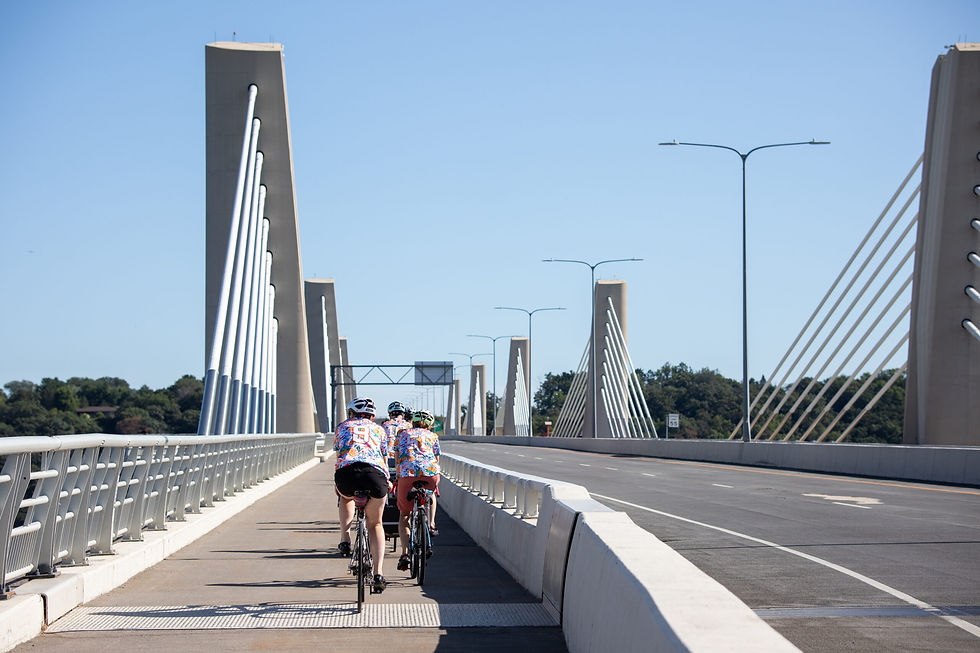Bike Lanes Work — And the Data Is Clear
- Sustainable Stillwater MN

- May 3
- 2 min read
At the recent 2025 World Economy Summit, U.S. Secretary of Transportation Sean Duffy expressed skepticism about the value of bike lanes (watch here), questioning their safety, impact on traffic congestion, and overall use. His comments have sparked concern from transportation advocates and communities across the country who are working to create safer, more sustainable mobility options — including here in Stillwater.
We’d like to help clarify the picture with data and insight from the Federal Highway Administration (FHWA) and other reputable sources, many of which come from within the Secretary’s own department.
Bike Lanes Improve Safety for Everyone
One of the Secretary’s main concerns was safety. However, numerous studies — including those from the FHWA — show that bike lanes can significantly reduce crashes. Even basic bike lanes marked with paint can reduce total crashes by 30 to 49%, and adding physical barriers such as posts or curbs improves safety even more.
Importantly, these reductions aren’t limited to bike-related incidents. Safer bike infrastructure tends to reduce overall crash rates, benefiting drivers, pedestrians, and cyclists alike.

Bike Lanes Do Not Cause More Traffic
It’s a common misconception that reducing space for cars causes more congestion. In fact, research shows the opposite: when people are given safe, reliable alternatives like bike lanes, many choose to take shorter trips by bike instead of by car, reducing the number of vehicles on the road.
The FHWA notes that narrowing vehicle lanes to create space for bikes does not increase crash rates or congestion. In cities that build a connected network of safe bike routes, the result is often less traffic, not more.
Cold Weather and Culture Aren’t Barriers
Secretary Duffy also questioned whether U.S. cities — particularly those with cold winters — can achieve the same level of bike use seen in European countries. While our cities and climates differ, we know that culture can evolve with infrastructure. Cities across North America with harsh winters have successfully grown year-round bike ridership by investing in protected lanes and bike-friendly policies.
Here in Stillwater, we're committed to creating a transportation network that supports biking and walking — not just because it works in Europe, but because it works here too.

What This Means for Stillwater
At Sustainable Stillwater MN, we believe in connected, inclusive infrastructure that serves everyone — not just cars. We support:
Expanding safe bike and pedestrian infrastructure in Stillwater and the surrounding region.
Pushing for state and federal investments in active transportation.
Encouraging community input in shaping a transportation system that reflects the needs of all residents — including those who choose to bike, walk, or roll.
While we understand there are differing views on how best to use our roads, the evidence clearly shows that bike lanes are a valuable, proven part of the solution. With thoughtful planning and investment, they can help communities like ours become safer, healthier, and more connected.
Sources:
300_edited.png)






Comments